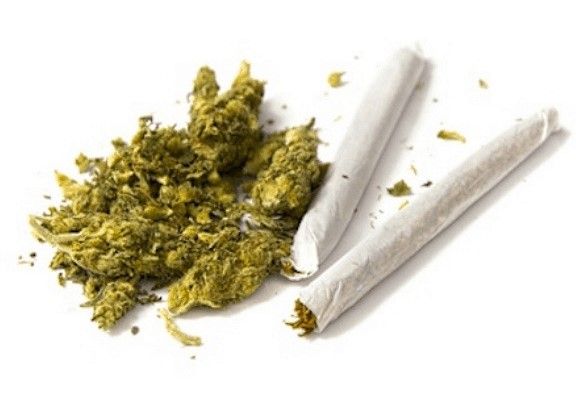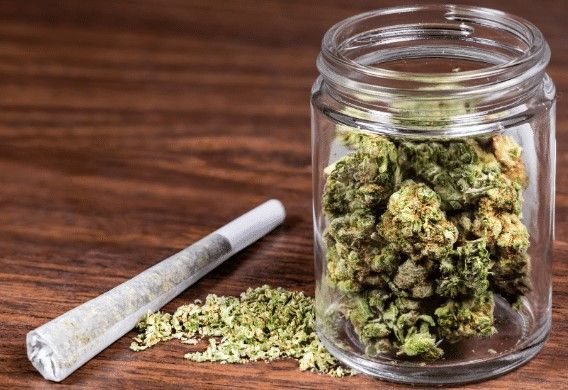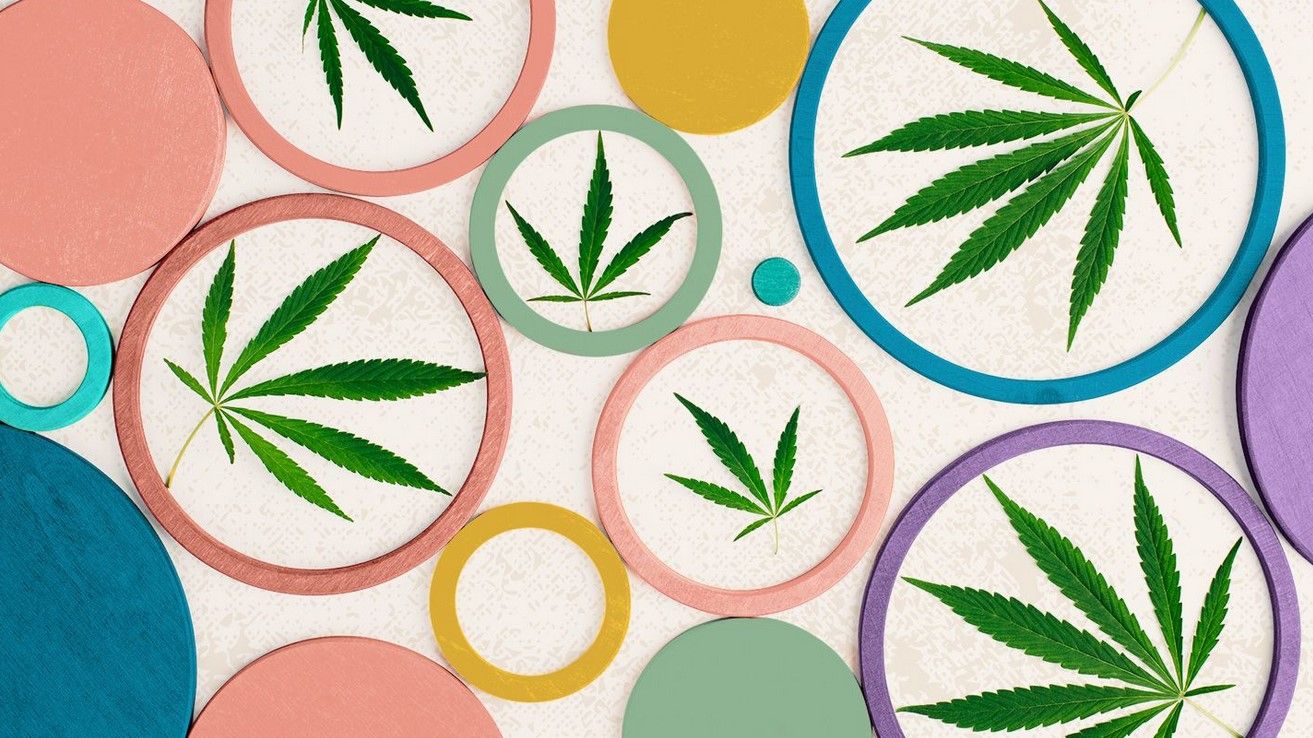The lingo of cannabis is similar to that of computer programming. They were a means to openly discuss something that was for many years illegal.
Cannabis slang was, in essence, created out of necessity. Cannabis users had to find a means to discuss without their parents, teachers, principals, or cops finding out.
This is also why there are so many marijuana-related words: as those who sought to limit cannabis use learned the lingo, the slang had to adapt.
This is one of many reasons why we use so many different words to keep our cannabis conversations under wraps. But let’s not forget the joy and inventiveness we’ve all experienced during a particularly powerful haut.
The mix of those two emotions is enough to produce a plethora of lingo on its own.
Where did all these words come from?
The Most Popular Weed Terms

Marijuana
Marijuana is a “slang” word that originated in the early part of the twentieth century, according to some. Cannabis sativa (or just cannabis for short) was simply known as before the first decade of the 1900s.
Cannabis referred to the parts of the plant that were utilized to create the psychoactive high. When the crop was grown for its fibers rather than its hallucinogenic effects, it was also known as hemp.
The Nahuatl (Aztec) term mallihuan is the origin of the word marijuana. Following Mexico’s Revolution, this term migrated north along with Mexican immigrants.
The term “marijuana” was first used in the early 1800s by scientists who were examining it. It eventually changed its spelling to the current form, and it was used by the director of the newly created Federal Bureau of Narcotics to paint a rather racist picture of non-white people (who, according on his opinion, were formed that way as a result of cannabis plant’s devastating effects).
The word marijuana migrated from coast to coast and eventually across the world as a result of its usage.
Grass
The origins of the word “grass” as a term for cannabis are murky. But, again, you must have some method to discuss an illicit product without your parents or cops getting wise, and referring to cannabis as “grass” appears to be a reasonable next step.
We, as Americans, often value and maintain our grass. Similarly, cannabis – as in the case of marijuana – is something enthusiasts care for a great deal. The connections are self-evident.
Finally, if you’re a kid who enjoys smoking joints and rolling papers, it’s easy to picture yourself telling your buddies you’ll wake and bake the next day: “You want to help me mow some grass tomorrow?” His parents would have no idea.
Pot
“Pot” is a term that cannabis aficionados argue about, much like “grass” does. It’s a word that was first used in the 1930s and 1940s, probably as a result of the rise in popularity of jazz music.
The Spanish word “potiguaya” is said to have given rise to the name “pot.” The term potiguaya comes from the Latin words potationem guayam, which refer to a alcoholic beverage prepared by infusing cannabis leaves in brandy or wine.
The term “pot” was used throughout the 1940s, 1950s, and 1960s. It was eventually depreciated in favor of the following marijuana phrase.

Weed
In the late 1980s and early 1990s, “weed” rose in popularity. And again, no one knows why this became a slang term for cannabis. We just know it did (as is evident from the name of this essay).
As is the case with a lot of these phrases, their origin is easy to guess. A weed is an invasive plant that grows in the wild under often harsh circumstances and thrives where other plants would not survive.
Although cannabis isn’t technically a weed by scientific definition, it is similar in stature and grows all over the world. In addition, it was clearly regarded as “unwanted” or ” invasive” by the parents and authorities of the time.
Ganja
Ganja is not a word borrowed from another language; it’s more of a loan term. Many people believe that ganja has its origins in the Rastafarian religion, which is known for promoting marijuana use.
Ganja is a Sanskrit (Indian) term that refers to the widespread souche of cannabis – cannabis sativa. More closely, ganja refers to cannabis flower blossoms, with terms referring to resin and seeds/leaves (charas and bhang, respectively).
Mary Jane
Mary Jane comes from a cannabis-derived phrase that was the first slang term for the drug. It’s constructed of two words: mari and juana.
In Spanish, the ‘i’ in marijuana makes an ‘ee’ sound. Because of this, the first two syllables are similar to the name Mary. Juana is a Spanish first name that corresponds to English names like Jane in addition.
The word’s adoption might have gone something like this: Mexican immigrants move to the United States in the early 1900s and bring psychoactive plants with them. In an effort to terrify native Americans into turning against the immigrants, the government adopts the Aztec name for the plant.
Mary Jane (and the abbreviated form, MJ) becomes popular after it is said Mary Juana by Mexicans who carried it over the border.
Dope
The term “dope” originated in the drug world when it was used to designate opium or a morphine derivative.
The term “dope” refers to a thick, syrupy, molasses-like substance that’s produced when opium is smoked. It then scaled the fence and came to mean a drug that isn’t specifically named (rather than being confined to opium).
It wasn’t until the 1950s that the term “dope” was re-purposed to refer to a particular narcotic. This time, cannabis was used. Because new and more powerful drugs, such as heroin, claimed the term for their own usage, that designator wouldn’t last long as a weed phrase.
The phrase “smack” was originally used to describe opiates in a rather modest way, but with their increasing availability, it began to refer almost exclusively to more powerful substances. Unenlightened parents occasionally asked, “Are you smoking dope?” during the 1980s and 1990s, but that faded away as time passed.
Chronic
The term “chronic” originates from one of cannabis’ most outspoken advocates, Snoop Dogg. The word was coined in the 1990s and has spread throughout the cannabis industry, even being taken up by Dr. Dre for his album Chronic.
Snoop explains that the phrase was derived from something he misunderstood at a noisy party in 1991. According to Snoop, someone informed him that the cannabis they were smoking had been produced using hydroponics, and he misunderstood it as hydrochronic.
Chronic caught his attention and he shortened it to simply chronic. He eventually figured out what was going on, but chronic stuck and became a popular slang term for cannabis.
Reefer
The word “reefer,” as it applies to marijuana, is just as enigmatic as a slew of other phrases. Where did the term “reefer” originate?
The word “reefer” may have come from the Spanish term “grifo,” which means cannabis smoker.
It’s easy to see how the Spanish word evolved into the word we have today when you consider that the ‘i’ in Spanish makes the ‘ee’ sound, and the ‘g’ sound (as in English ‘gate’) is faint when spoken fast (in conversation).
Skunk
The name “skunk” is a popular term used to describe this cannabis smell. Describing the odor of certain marijuana strains that first appeared in the 1970s as “skunky” is a well-known description.
“Skunk” fit as a weed word since the odor of those and later strains was extremely pungent. Some went so far as to call the odour “dead animal” and reminiscent of a skunk’s spray. And they’d be right in that assessment.
The term was originally used to refer to marijuana in particular, but it has since been adopted by cannabis enthusiasts as a generic term. The phrase still applies because many strains, such as Sour Diesel, produce the pungent, skunk-like scent that gave marijuana its moniker.

Wacky Tobaccy
This should go without saying. When cannabis is chopped up for smoking, it resembles tobacco (or oregano). Cannabis, on the other hand, has the potential to produce psychoactive side effects that make you goofy rather quickly.
As opposed to “wacky tobacco,” “wacky tobaccy” is more appealing. And when it comes to cannabis, the goal is always to have a good time.
Hacher
In several countries, including the United Kingdom and Australia, a different word is used to designate cannabis. The word “hashish” is derived from the Arabic term for “grass.”
Hashish is the black, sticky substance that is derived from the Cannabis sativa plant’s flowers. It may be prepared by hand, by sifting leaves through a screen, or with alcohol extraction.
Although the cannabis that you smoke and the hashish produced from its components differ significantly, the term hashish was shortened and then applied to cannabis in general. It’s also not difficult to see how the name originated from the same name.
Herb
Cannabis has a wide range of nutritional, medical, and industrial benefits (not to mention a nice little dose of psychedelia).
The first two features — nutritional and medicinal — are enough for botanists to classify marijuana among other herbs such as basil, dill, and cilantro (sprinkle this herb on your salad and eat it!). In more general language, cannaenthusiasts have adopted the term to refer to the smoking portions of the plant.
Bud
Even the newest beginner among us must be aware that plants produce flowers. That’s Biology 101, right? It’s from second grade, I believe.
Regardless of its status, marijuana is a plant like any other. It, too, develops blossoms. It’s the blossoms that make up the majority of the high from marijuana.
Unlike The Birth of Venus, these blooms don’t arise fully formed. They emerge from tiny buds.
Stoners of the past employed that fact as a means to communicate about marijuana in order for the Man not to comprehend.
Nug
Another cannabis phrase that began as a derivative of the bud concept has since become obsolete. The cannabis plant creates buds all along its leader (i.e., the main stem), as previously said. Many people, however, believe that tippy-top buds are the finest because they get the most sunlight and frequently develop to be the biggest.
As a result, the slang gods descended from on high and endowed us with an efficient method to talk about these magnificent buds.
Instead of saying, “I’d want a Zip of your finest Yoda OG, sir,” you may slide three Benjamins across the counter (check local listings) and say, “Please send me some Nugs of Blue Dream, good sir.”
It’s not much shorter, but it’s a lot more pleasurable to pronounce (thank you, slang gods).
The distinction between a nug and a bud is subtle, but it’s there. All nugs are buds, but not all buds are nugs. Only the best buds are allowed to be called nugs, despite their outward appearance.
Don’t worry if you’re unsure about how to pronounce this marijuana term correctly. People nowadays use these terms interchangeably (because who doesn’t want to smoke the greatest ganja possible?) because it’s 2017, so don’t sweat it.
Fleur
This term for marijuana is easy to understand once you’ve heard about buds and nuggets. This word must be used with caution, and it’s important to know where and with whom.
If you go up to the incorrect person and say, “I’d want some flowers, please,” you’ll almost certainly receive roses, daisies, or tulips. And even if you do smoke those to get high or relieve your pain, it’s not going to happen!
You can use this one if you’re feeling a little more chatty. It’s kind of out of date, but you may bring it up from time to time with those in the know (e.g., “That’s some delectable flower!” as you pass the joint around the circle).
Dank
Dank, for example, is among the most reviled terms imaginable for those who aren’t familiar with it. However, for smokers, dank is a wonderful thing.
It refers to the spicy, skunky, diesel-fuel-laden aromas that emanate from cannabis that is rich in humulene, myrcene, and other terpenes (which is a positive thing).
The term dank, which is often used as a noun to describe cannabis of excellent quality, can also be used as a verb (as in, “Pass that dank my way!”).

Hemp
Some well-intentioned but otherwise uninformed guy started using the word hemp to refer to cannabis cigarettes in a hash history (annals pronounced with a short “a,” by the way, not the long “a” you’re thinking about). That began a chain of events (and language usage) that continues to perplex people today.
Why? Because hemp is not the same as the material you put in your brownies or offer in your bowls.
Hemp is a variety of the Cannabis sativa plant that contains less than 1 percent of the psychoactive cannabinoid THC. Because hemp has less than 1% THC, it is non-psychoactive (i.e., does not give users a “high”). THC is the chemical responsible for marijuana’s notorious reputation as a controversial topic. As a result, despite originating from the same species of cannabis, hemp and marijuana are genetically distinct and vary in chemical composition, usage, and farming techniques.
Hemp seeds may be used in a variety of foods, including bread, cereals, dressings, margarine, and flour. Those same seeds can also be utilized to create energy, lubricants, paint, cosmetics, and personal care products. The stalk of the hemp plant has industrial applications as well.
Various parts of it can be used in the production of:
- Fibreboard
- Insulation
- Concrete
- Rope
- Canvas
- Carpet
- Clothes
- Shoes
- Paper products
- Cardboard
Hemp also includes cannabidiol (CDB), although it is present in considerably smaller amounts than in Cannabis sativa’s non-hemp variety.
No one knows why people began calling perfectly good psychedelic or therapeutic cannabis as hemp, but it stuck and you’ll still hear it utilized now and again.
However, as you may see, it’s totally incorrect to use hemp as a synonym for marijuana.
At the very least, when you go to your local dispensary and ask for hemp, they’ll regard you strangely and maybe sell you a ball of hemp wick. At the absolute worst, they’ll direct you down the street to the hardware store and warn you never to return.
When you hear people say things like, “I’m not a fan of marijuana,” “hemp” is not the correct term.
In reality, try to banish the term “strike” from your cannabis lingo.
Sinsemilla
The name implies that it is a portmanteau (two words blended together) of the Spanish words “sin” (without) and “semilla” (seed). Literally translated, it means “without seeds.”
The term “sinsemilla” refers to cannabis flowers that were not pollinated during growth and do not contain seeds.
Since pretty much everything you’ll come in contact with – plants, buds, and products — will be sinsemilla (or produced from it), this is a safe term to employ.
For more on the history, pronunciation, and advantages of sinsemillaarijuana, check out this post from the HMJ blog: Everything Cannabis Enthusiasts Need To Know About Sinsemilla.
Trees
In some cases, the term “tree” or “trees” is used in relation to a pot plant, implying that robust and tall cannabis on the stalk can develop, as it does with trees.
Trees, like the other weed words on this list (flower, we’re talking about you), requires some prior knowledge on both sides.
You can’t just say, “Hey, buddy. I’m going to burn some trees this afternoon. Wanna join me?” or “You got trees?”: You’ll confuse the heck out of anyone you’re talking to if you do that.
This is especially true with local dispensaries. Please do not tell the budtender behind the counter, “I’d want to buy some trees, please.” They’ll most likely send you to the nearest greenhouse and shake their heads while making jokes about you after you leave if you use hemp on site.
However, if you research the etymology of “trees,” you’ll find that it isn’t a word we use these days. It may still be floating around here and there in obscure contexts. We don’t suggest using it outside your inner circle of friends, but if you hear it in the proper situation, at least you’ll know what the other person is attempting to communicate.
Focus On The Smoke
Don’t get too worked up about using the precise phrase. Sure, you don’t want to call a joint a spliff in order not to be mocked and despised for the rest of your life.
Instead of attempting to memorize the entire list of marijuana phrases, choose a few and focus on the smoke (slang for being more concerned about what you put in your body rather than what comes out of your mouth). You’ll get the hang of flinging cannabis lingo like a pro with enough practice, and you won’t have to worry about it anymore.
Meanwhile, concentrate on the finer points such as what strain you’re smoking, the quality of that strain, and how it was cultivated.
We use world-class organic cultivation techniques at our Rocky Mountain-based grow facility to give cannabis aficionados with the purest marijuana experience on the planet.
We produce our plants in soil that is free of chemicals and pesticides, as nature intended. We even hand-trim our plants to ensure that they are 100% organic from the root to the top.
The fact that you can transform your favorite foods into something else entirely is a game-changer. Not only does this make all of your smoking, dabbing, and edible activities more pleasurable, but it also ensures that everything tastes better – regardless of how you light it.

